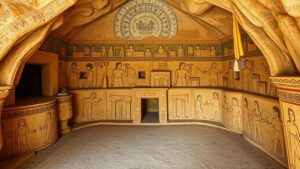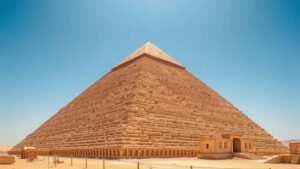Tracing the “Path of the Serpent,” tunnels carved in the likeness of a mythical beast.
Tracing the “Path of the Serpent”
The “Path of the Serpent” refers to a fascinating network of prehistoric tunnels and earthworks found in various regions, especially prevalent in the Americas. These tunnels are not merely natural formations; they have been intricately carved into the landscape, often likened to the sinuous shape of a serpent. Various cultures, particularly Native American tribes, imbued these structures with mythical significance, weaving stories of serpentine beings and spiritual journeys into their cultural fabric.
Historical Context
The origins of the “Path of the Serpent” can be traced back to the early civilizations that spanned across North America. Archaeological evidence suggests that these tunnels were carved by the Adena and Hopewell cultures as early as 800 BCE to 100 CE in regions that are now parts of Ohio and West Virginia. The structures are often aligned with celestial events, pointing to a sophisticated understanding of astronomy among these ancient people.
For example, the Serpent Mound, located in Adams County, Ohio, is a prominent example. This effigy mound, measuring 1,348 feet in length and rising 3 feet in height, depicts a serpent curling around an oval-shaped object, interpreted by some as an egg. Archaeological dating has placed its creation around 1070 CE, although some scholars argue for earlier origins based on the methodology of its construction and cultural relevance.
Construction Techniques
The creation of the serpent-like tunnels involved meticulous planning and labor. Communities mobilized to construct these earthworks, employing tools made from stone and bone. Over the course of generations, the communities adapted their construction techniques, which included:
- Shaping earth and stones to form specific designs.
- Using natural features of the landscape to enhance structural integrity.
- Employing local resources for tools and materials.
This labor-intensive effort suggests not just a communal project but also a shared religious or spiritual significance attached to these constructions. alignment of the tunnels with celestial events further indicates their use as markers of time and perhaps ritualistic spaces for ceremonies.
Mythical Significance
The serpent as a mythical creature holds immense symbolism in various cultures. For indigenous peoples, the serpent often represents transformation, rebirth, and the flow of water–the source of life. By tracing the “Path of the Serpent,” individuals were believed to embark on a journey of spiritual significance. physical act of traveling through these tunnels paralleled the metaphysical pathways towards enlightenment or understanding.
The narratives surrounding these serpent structures often reflect the relationship between humans and the natural world. The complexity of these stories varies widely, which is a testament to the diverse cultures that thrived in these regions.
Current Research and Discoveries
Modern archaeological research continues to uncover new insights into the “Path of the Serpent.” Advanced techniques such as LiDAR (Light Detection and Ranging) have enabled scientists to visualize the underlying structures hidden beneath forested areas or soil, revealing a more complex landscape than originally thought.
Recent studies in 2021 have highlighted additional mounds and alignments previously undocumented, suggesting that the serpent pathways were even more extensive than believed. The use of drones in these archaeological endeavors has further enhanced the ability to survey sites over large areas, unearthing new tunnels and aligning structures.
Real-world Applications and Cultural Relevance
Today, understanding the “Path of the Serpent” serves multiple purposes. It allows for the preservation of indigenous cultures, offering insights into their histories, beliefs, and practices. Also, these sites have become focal points for archaeological tourism, encouraging respectful engagement with history.
Plus, as environmental challenges grow, the lessons learned from ancient societies about living harmoniously with the earth can inform modern sustainable practices. The paths carved by these ancient peoples remind us of the importance of community, cooperation, and respect for the natural world.
Conclusion
The “Path of the Serpent” serves as a remarkable intersection of history, mythology, and archaeology. Through its tunnels and mounds, ancient cultures have left a legacy that continues to enrich our understanding of human civilization. For those intrigued by the stories intertwined with these structures, exploration of these ancient sites can be a journey into the past, unlocking the mysteries of those who walked the path before us.
As research continues and new discoveries are made, it is essential to approach the study and preservation of these sites with a commitment to respect and authenticity, acknowledging the richness of the cultures that created them.

